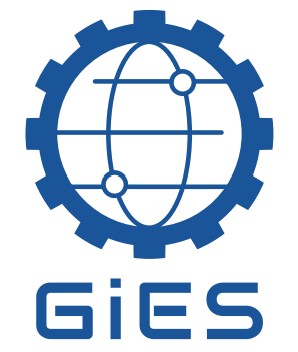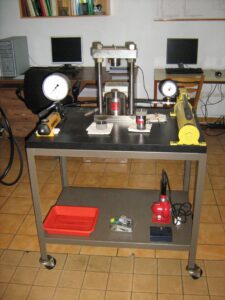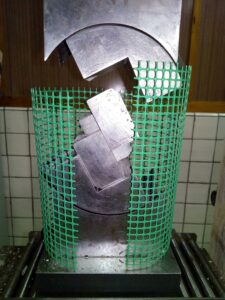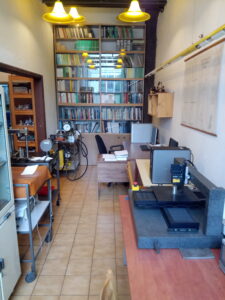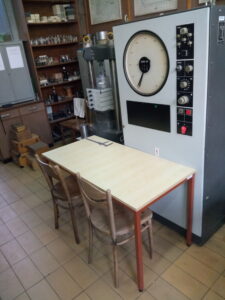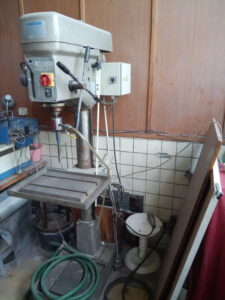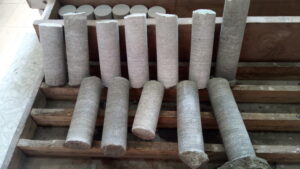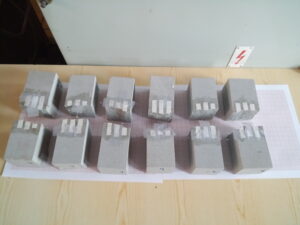In the field of "Mechanics of rocks and rock masses" and "Geomechanics," the Department specializes in the state equations, limit state conditions and rock material constants, mechanics and harbingers of brittle cracking, the behavior of rocks under high-pressure conditions, the ability to accumulate elastic energy, behavior in the post-critical state and the sheathing of rocks, creeping and the properties of reological rocks, friction in rocks, anisotropy of mechanical properties of rocks, geometric structure of the surface of the walls of cracks in rocks, mechanics of cracked rock centers, stress state and displacement of the rock mass in the vicinity of excavations, deformation of the rock mass and the surface of the site under the influence of mining exploitation, geomechanical foundations of housing design and maintenance of excavations, and prevention of hazards from the mining industry.
In researching for the industry, the Department develops scientific expertise and opinions, formulates recommendations and guidelines for anticipating, preventing, and counteracting the risks from the mining industry in the carrying out of excavations, the exploitation of mineral deposits, and the construction and maintenance of underground structures.
In the laboratories of the Department in the field of "Rock and Mining Mechanics" and "Geomechanics," there are also didactic classes with students of seven specialties at the Faculty of Mining and Geology of the Silesian University of Technology.
Topics of research:
- Constitutive equations and conditions of the boundary state of rocks.
- Material constants.
- Mechanics and harbingers of brittle rock cracking.
- Preservation of rocks in high-pressure conditions.
- The ability to accumulate elastic energy, behavior in a post-critical state, and the rock burst resistance of rocks.
- Creeping and reological properties of rocks.
- Friction in the rocks.
- Anisotropy of mechanical properties of rocks.
- Geometric structure of the surface of the walls of cracks in the rocks.
- Mechanical properties of cracks and behavior of rocks cracked in the force fields.
- Deformation and dynamic manifestations of mining pressure in the vicinity of mining excavations.
- The geomechanical basis for the design of excavations and underground structures.
The laboratories of the Department carrying out research and didactic activities in the field of "Mechanics of rocks and rock-masses" and "Geomechanics" are equipped with:
- standard EDZ-40 strength machine (400 kN, compression/stretching),
- standard EDB-60 strength press (600 kN, compression),
- SHM-MG 250/4 servo-hydraulic strength machine (250 kN, compression/stretching) for static and dynamic tests controlled by force, displacement or deformation signal,
- rigid press (1.75 MN/mm) to test the behaviour of rock samples in the post-critical state (480 kN, compression)
- eight PSH-400 (480 kN) hydraulic-spring creepers for rock creeping research with single-axis compression,
- a crawler for the study of rocks for creeping with triaxial compression,
- two KTK-60 triaxial chambers for rock compression testing at circular pressures up to 60 MPa,
- three-axis chamber KTK-100 for the study of rocks for compression at circular and pore pressures up to 100 MPa,
- ATK-400 "Unipress" three-axis apparatus for the study of rocks for compression at circular and pore pressures up to 400 MPa,
- SBEL apparatus (model RM-442) for the study of rocks for compression at circular pressures up to 70 MPa,
- LCP-20 hand press for testing rock resistance to single-axis compression (200 kN),
- three hand presses for marking the strength of rocks against point load (100 kN),
- holders for the study of rocks for direct stretching,
- instruments for the determination of the tensile strength of rocks by the Brazilian method,
- the instrument for the determination of the strength of rock material and cracks in the rocks for shear when squeezing in the handle,
- instruments for testing rock samples for straight cylindrical shear,
- sensors and apparatus for measuring and recording forces, pressures, deformation, and displacements, including the MGCplus f-my Hottinger Baldwin Messtechnik 16-channel measuring amplifier,
- instruments for the marking of force and displacement transducers,
- computerized data acquisition and processing system with PCL-718 12-bit A/C converter.
A computer-controlled laser profiler is used to study, among other things, the petrographic properties of rocks and the geometrical structure of the surface of cracks in rocks.





